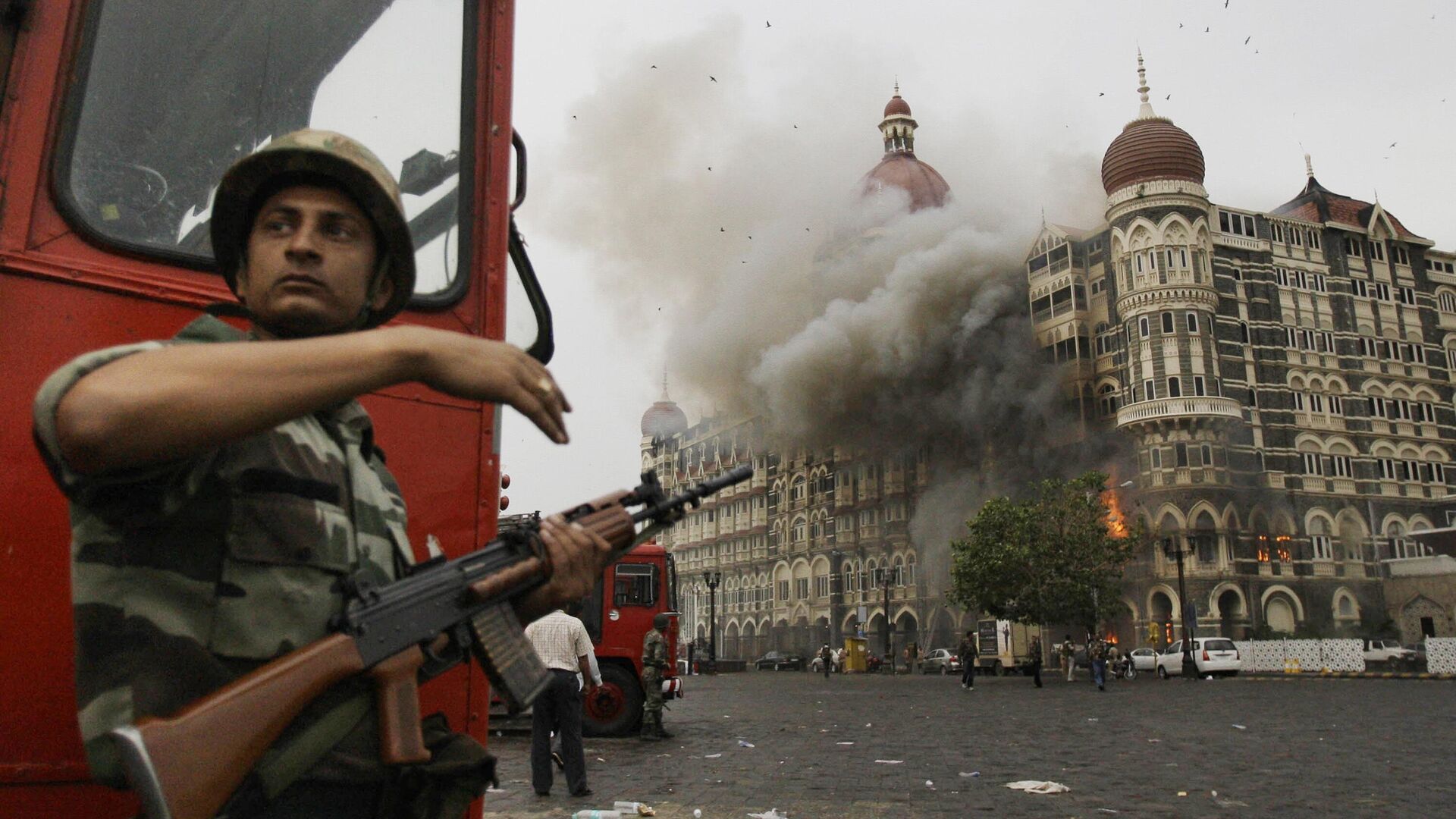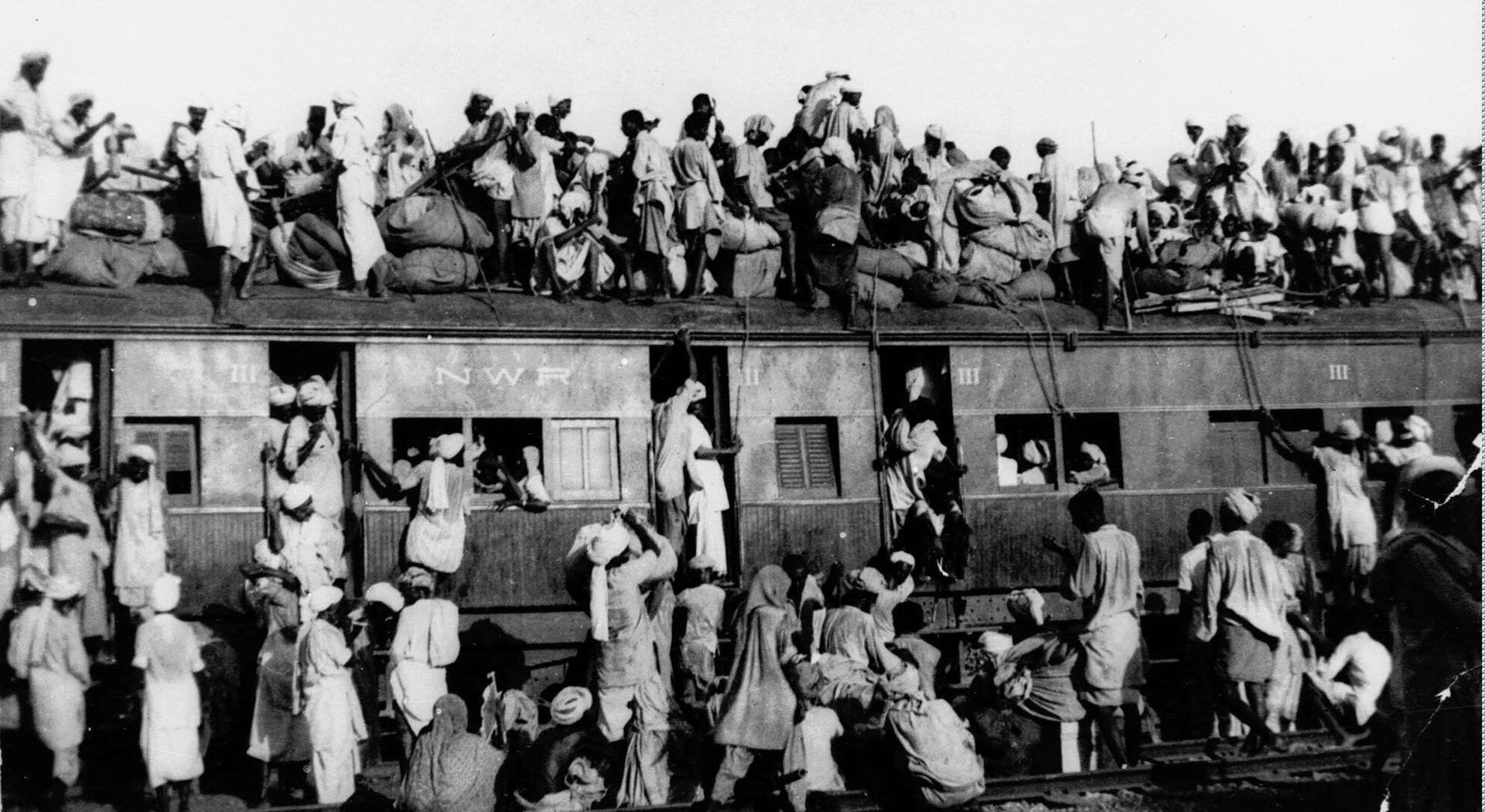Find Out Why Indo-Pak Strife Rooted in Britain's Bloody Legacy of 1947 Partition of India
08:00 14.08.2023 (Updated: 11:43 15.08.2023)

© AP Photo / David Guttenfelder
Subscribe
British India was partitioned on 14 August 1947, symbolizing the end of colonial rule on the subcontinent. Sputnik India explains why India and Pakistan got their independence at the cost of an immeasurable amount of human lives and enormous bloodshed that still persists until today.
The British Empire was on its last leg by 1947 when it faced two powerful liberation movements in British India.
Despite the fact that the leaders of them were against British colonial rule, their views differed on the structure of an independent state: the leaders of the Indian National Congress wanted to create a united India, while the supporters of the All-India Muslim League planned to establish a separate state only for Muslims.
However, the British colonial administration decided to follow in the footsteps of Roman imperial policy known as ‘divide and rule’ and split British India along religious lines.
As a result, the partition of British India became the start of the long-term bloody conflict between India and Pakistan, which has been raging till today.
Sputnik India takes a look at the bloody legacy of British Raj on the Indian subcontinent, which caused the long-standing Kashmir conflict.
Why Was British India Partitioned in 1947?
The British Empire's economic and military resources had been drained dry after two world wars.
It faced two powerful national liberation movements on the Indian subcontinent in this state. By 1946, it became clear that the United Kingdom (UK) wasn`t able to sustain the colony and announced it would grant India independence. However, there was a question about the partition of India.
The supporters of Mahatma Gandhi and Jawaharlal Nehru advocated for a united India, while the All-India Muslim League Leader Muhammad Ali Jinnah aspired to create Pakistan as a Muslim homeland.
The majority of Indian National Congress leaders believed that an independent India should be a secular state embracing all the faiths such as Islam, Hinduism, Sikhism and other religions practiced for centuries on the Indian subcontinent.
The main ideologue of Indian Independence Movement Mahatma Gandhi said: “Hindus should never be angry against Muslims”. He also asserted that Islam and Hinduism shouldn`t represent two antagonistic cultures.
As independence neared, the relationship between Hindus and Muslims had exacerbated stirring up new conflicts. Nevertheless, the British administration acted out of its own interests leaving the independent nations of India and Pakistan to tackle the emerging dilemmas on their own.
The British colonialists also had to take into account the issue with the territories, which were not formally a possession of the British Empire being under the power of Indian rulers. But in reality such principalities were under UK stewardship in terms of defence, foreign contacts and means of communications. Should these principalities be partitioned, they would have to accept joining either India or Pakistan.
Instead of solving the confessional issue and the problem of principalities the last Viceroy of India, Lord Louis Mountbatten suggested a partition plan, which was approved by British King George VI as the Indian Independence Act of 1947. Based on that plan, India was divided according to religious orientation, in other words, two separate states for Hindus and Muslims were created. In June 1947, the leaders of Congress, the Muslim League, and the Sikh and Dalit communities agreed to the partition of British India. Districts with majority Hindu and Sikh populations were included in India, while areas that were mostly Muslim became part of Pakistan. The disputed territories as North-West Frontier Province were required to accept one of the sides by referendum. Religion thus became a crucial factor in South Asian politics.
Eventually, on 14 August 1947 the Dominion of Pakistan was established and the following day, 15 August 1947, India was declared an independent country.
Kashmir Conflict Part & Parcel of Britian's Partition of India Legacy
Kashmir serves as evidence of this seemingly eternal conflict between India and Pakistan. Overall, princely states were given their own choice of either joining Pakistan or India. In most cases, the ruling monarchs followed the will of their people. However, the state Jammu & Kashmir turned out to be different.
It was situated right along the new border and had a Muslim-majority population, ruled by Maharaja Hari Singh, the Hindu Dogra ruler of Jammu and Kashmir. When he was asked to pick a side, he chose independence. In 1947, fearing that the monarch would alter the region's demographics by eliminating the Muslim population to ensure a Hindu majority and, after that, join India, the Kashmir people rebelled in Poonch, and armed tribes from Pakistan joined the fight in the northern regions of Kashmir. The monarch, Maharaja Hari Singh, asked India for military help and agreed to join India if Kashmir would stay under his jurisdiction.
Divide & Rule: How Were Borders Between India & Pakistan Drawn?
The partition of British India based on the religious factor became Britian's colonial policy of choice, namely, divide & rule, which spawned the current, incessant enmity between India and Pakistan, while excluding the possibility of any sustainable development for the South Asian region. The UK formally withdrew from the subcontinent, but in fact London preserved its rule through religious and territorial contradictions. Previously, the British incited the same conflict between Jews and Arabs in the Middle East as a result of which, the UK was able to interfere in the policies of the nations of the region. The mandate system was established in Palestine, Transjordan and Iraq. The British controlled these territories indirectly under the authority of the League of Nations.
Who Divided India and Pakistan?
In 1947, the British established the boundary commission composed of members of the Indian National Congress and the All-India Muslim League led by British civil servant Cyril Radcliffe, that demarcated the boundaries between India and Pakistan. However, the leaders of the Indian National Congress and the All-India Muslim League weren't able to come to an agreement here so therefore Radcliffe made all the decisions on his own. The commission's instructions required that the boundaries be demarcated along religious and other lines such as natural borders, roads, irrigation and social and political factors.
Radcliff's line didn’t comply with all these factors, and therfore violated the integrity of ethno-confessional communities and families as a result. It also sparked numerous controversies like the transfer of the Gurdaspur district to India where the majority of the population was Muslim. Sikhs were in the same situation when a huge area of sacred sites turned up in Pakistan, even though the Sikh community was in India.
Most of these problems haven't been solved to date. Now, millions of people in India and Pakistan have to struggle with the mess that the British left 75 years ago.
What Were the Partition's Immediate Effects?
The Partition resulted in a huge wave of migration, as thousands of families and friends found themselves on different sides of the new borders. Furthermore, communal violence accompanied by rebels and fights, was everywhere.
Was the Partition of India a gift or a curse for the majority of citizens in the new-born independent countries?
Largest Mass Migration Ever
In the mid-1800’s British India consisted of several hundred provinces and princely states under British rule. British India was rigidly split on the basis of religion. Muslim-majority Pakistan (West Pakistan and East Pakistan, later Bangladesh) and mostly Hindu but secular India. The partition turned out to be bloody, as religious boundaries were blurred and there were no population transfers (except Punjab), Hindu, Muslim and Sikh communities had to travel hundreds of miles to reach their new homeland.

In this September 1947 file photo, hundreds of Muslim refugees crowd on top of a train leaving New Delhi for Pakistan. After Britain ended its colonial rule over the Indian subcontinent, two independent nations were created in its place: the secular, Hindu-majority nation of India, and the Islamic republic of Pakistan. The division, widely referred to as the Partition, sparked massive rioting that killed up to 1 million, while another 15 million fled their homes in one of the world’s largest ever human migrations. (AP Photo, File)
© AP Photo
According to the 1951 Census of India, 7,295,870 people, apparently all Hindus and Sikhs, moved to India from Pakistan immediately after the Partition. And as for the 1951 Census of Pakistan, presumably 7,226,600 Muslims entered Pakistan from India.
Historians agree around 12 million people were displaced as a result of the Partition of India and Pakistan, altough some figures even go as high as 14.5 million forced refugees.
Millions Abducted, Raped & Killed
The division along religious lines spawned inconceivable slaugther on both side of the Indian subcontinent, where various communities had lived peacfully for decades. As a result, Hindus and Sikhs found themselves on one side, while Muslims were on the other, in the fight for their identity in the newly established homelands.
In regions such as (Sikh-majority) Punjub, the situation basically resembled an undeclared civil war, with massacres, arson, forced conversions, mass abductions, and savage sexual violence. Many women and children from rural areas were massacred by their own family members to prevent them from being assaulted and raped.
“The estimate of those killed has varied from 500,000 to over 1,000,000. The generally accepted figure stands at around 500,000,” according to the information on the Government of India's website.
About 83,000 women were raped, many of them brutally disfigured or dismembered, data by the Indian government suggests. But other sources even put those horrifying numbers higher.
Many people became victims of contagious diseases in refugee camps, thousands endured violence from other communities or even from their own families.
Kashmir Conflict
The Kashmir conflict became the enduring legacy of the partition of India and the main prism through which modern Indo-Pakistani relations are viewed.
“Kashmir is the real test of secularism in India.” - Mahatma Gandhi once said. Over the course of 70 years, it has been the center of four wars between the two powerful armies.
The Maharaj’s decision to join Hindu-majority India allowed Indian troops to enter the region and repel the Pakistani herdsmen and prevent them from taking control of Kashmir -- which the Pakistanis genuinely believed (and do believe now) belonged to them because of the Muslim-majority population of the region.
The war that broke out -- the first Kashmir war -- caught the attention of the United Nations (UN). A ceasefire was brokered by the UN Security Council in 1949, with the subsequent establishment of the Line of Control (LoC), according to which the northwestern part of Kashmir went under the control of Pakistan, while the rest remained under the jurisdiction of India.
Under Article 370 of the Indian Constitution, Kashmir was granted semi-autonomy.
As for Hari Singh, he remained Maharaja until the Indian government abolished the monarchy (1952), later on, he died in Bombay in 1961.
In August 1965, the second India-Pakistan war broke out. Thousands of people were killed on both sides. UNSC Resolution 211 ended the war, and as a result, India and Pakistan established closer relationships with the Soviet Union and China. However, Kashmir was kept divided and occupied.
The third war broke out in 1971. This time the focus was not on Kashmir but on East Pakistan. Indian forces helped rebels fight for independence and defeated Pakistani troops. The war resulted in the birth of a new state on the map - Bangladesh, carved out of Pakistan's eastern zone.
In 1999, the fourth India-Pakistan war erupted. The attacks were launched in the Indian-controlled area of Kargil. Muslim militants spilled into some parts of Kashmir. By the end of July 1999, the fighting in Kargil ceased, with India achieving victory. Since then, 26 July is celebrated in Bharat as Kargil Vijay Diwas.
How India's Parition Reverberates Today
The bloody legacy of the Partition of India still haunts Indians and Pakistanis to this day.
Kashmir became one of the most militarized places on Earth, as India and Pakistan deployed military forces along the LoC. Many people have been born in this conflict and many of them will have to die with this conflict.
Even years after the Partition of India and Pakistan, the wounds haven't healed and continue to bleed.
From 1990 to 2010, Mumbai (previously called Bombay) was rocked by violent riots between Muslims and Hindus. The Indian government reported that in 2008 a series of coordinated attacks ended up with hundreds killed and injured. Historic buildings, blocks of flats and hotels sustained extensive damage.
In July 2011, a bomb exploded at the Opera house, at Zaveri Bazaar and Dadar, leaving 26 dead and hundreds injured.
Owning to the British scheme of drawing borders along religious lines and exploiting spiritual antagonism, the two neighbors, India and Pakistan, became sworn enemies.
On both sides of the aisle between India and Pakistan, family members were separated from their relatives and friends by Britain's artificially drawn borders. As a result of the current, complex relations between India and Pakistan, visa restrictions and fear of the 'other side', people hardly ever cross the border, though, on both sides of the Indo-Pakistan frontier family members are still struggling to find each other through letters and newspapers.
But there are happy endings after all. We are united by social media, and this phenomenon has already helped some lucky family members meet and get back together. A heartwarming story of siblings reuniting at the Gurdwara Darbar Sahib that took place in May this year turned out to be one of several touching examples.

